Who Is Thomas Partey?
Thomas Partey has spent most of his senior career at Atlético Madrid, the Ghanaian international only straying away from Atleti for two seasons on loan.
With over 100 appearances for the club, he has become one of the most constant and reliable players during the era of Diego Simeone at Atlético; it is hard to imagine Thomas in any other club colours.
However, with several reports that Thomas is looking for a move to the Premier League, it seems that his time playing in La Liga is coming to an end.
With Arsenal currently being the front runners to secure Thomas’ signature, this is a massive step for the midfielder in terms of his career.
Arsenal are currently in a transition period under new manager Mikel Arteta, and Thomas would be walking into a whole new environment.
Given Arsenal’s current state, and the fact that Thomas is settled and comfortable at Atlético, it really is a high risk, high reward move for the 26-year-old should it happen.
This tactical analysis will look at Thomas’ main strengths, his weaknesses, the tactics of both Atlético Madrid and Arsenal which will explain why the transition will be such a big one, and a player comparison to three current Arsenal midfielders to see who he’d pair up with in midfield, and who he might replace in Arsenal’s current XI.
Thomas Partey Style Of Play & Position
Thomas operates as a defensive midfielder, though he can function as a central midfielder if called upon.
He also has a few appearances under his belt playing as an attacking midfielder, and as a right-back.
He is first and foremost a defensive player, more often than not, the last player behind the defensive line.
However, that does not make him static in where he positions himself on the pitch, quite the opposite actually.
Thomas is a player with incredibly high stamina, and that is evident in his action map for the season.
Thomas Partey Heat Map
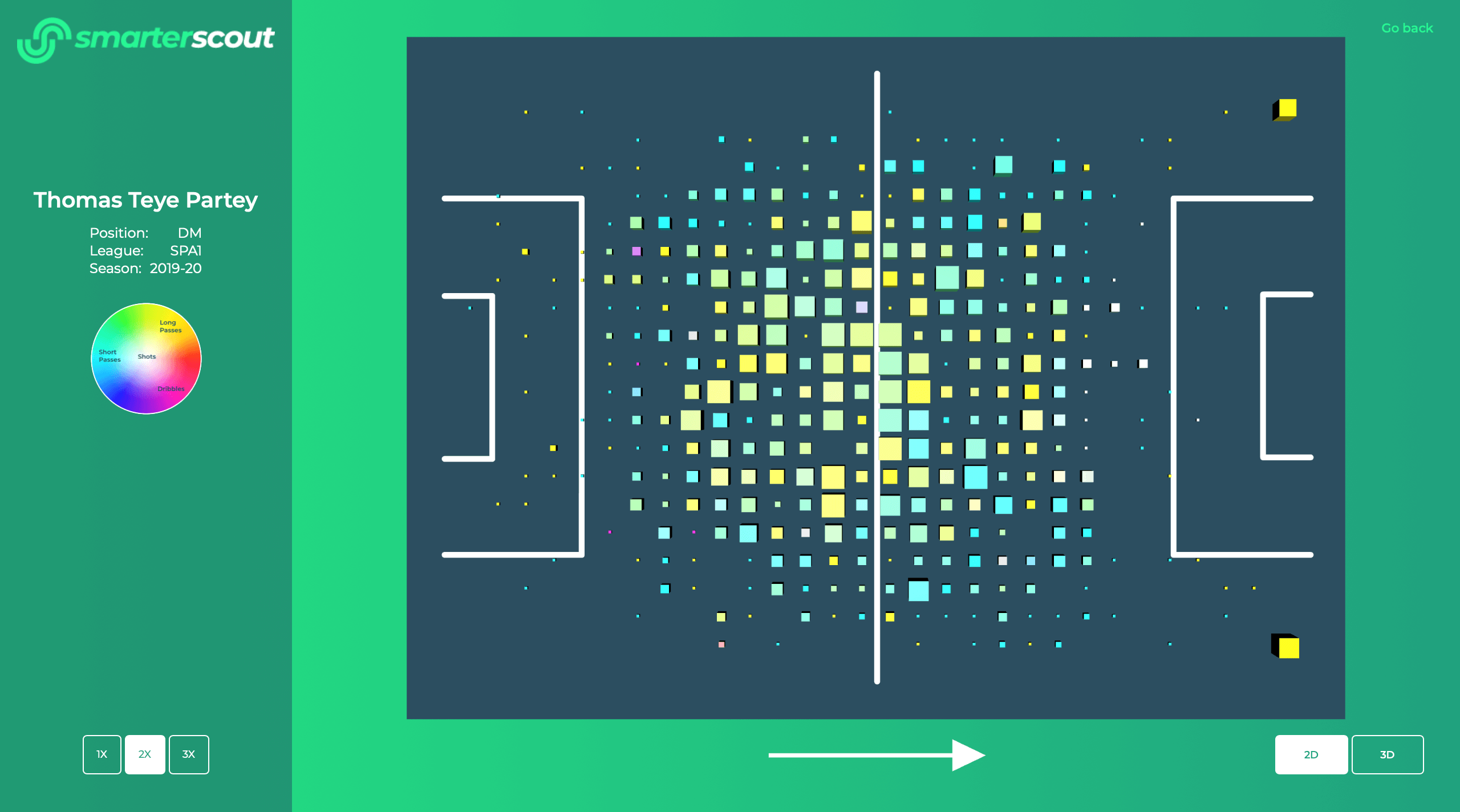
This action map can tell us a lot about Thomas and his positioning.
The most obvious factor is that he occupies almost all of the pitch.
Central midfielders tend to be the players on the pitch with the most movement as they do have the responsibility of contributing in both attack and defence.
However, with both Atlético Madrid and Ghana, Thomas occupies the defensive midfield role.
Essentially he plays a hybrid role of fulfilling both the duties of a defensive midfielder and a central midfielder.
This is a very high risk, high reward style of play, but Thomas is skilled enough that he is able to pull it off well.
In the times he doesn’t, he commits mistakes, but more on that later.
Another tidbit that can be read from the action map is what kind of actions he performs on the pitch.
With predominantly yellow, green, and blue markers on the map, it shows that Thomas preforms long passes and short passes in these areas.
Therefore, from the map, we can tell that his good pitch coverage leads him to be one of Atlético’s main ball carriers and progressors, and both the statistics and the eye test prove this.
Thomas Partey Statistics
Statistically, Thomas has his Atlético midfielder teammates beat in almost every stat when it comes to passing.
Based on these statistics, Thomas is always attempting to move forward with the ball, and this can be seen with his stat in forward passes per 90 (19.41).
And although he has not registered any assists this season, he often tries to get the ball to his forward playing teammates, despite being a defensive midfielder, which can be seen when looking at his final third passes per 90 (10.91) and his progressive passes per 90 (10.46).
The accuracy of his passes show that these pass contributions are not meaningless, and they do in fact lead to progressive play for Atlético Madrid (rather than the opposition winning back the possession), as Thomas has an overall 86.21% pass accuracy, with his progressive pass accuracy being at a high 82.86%.
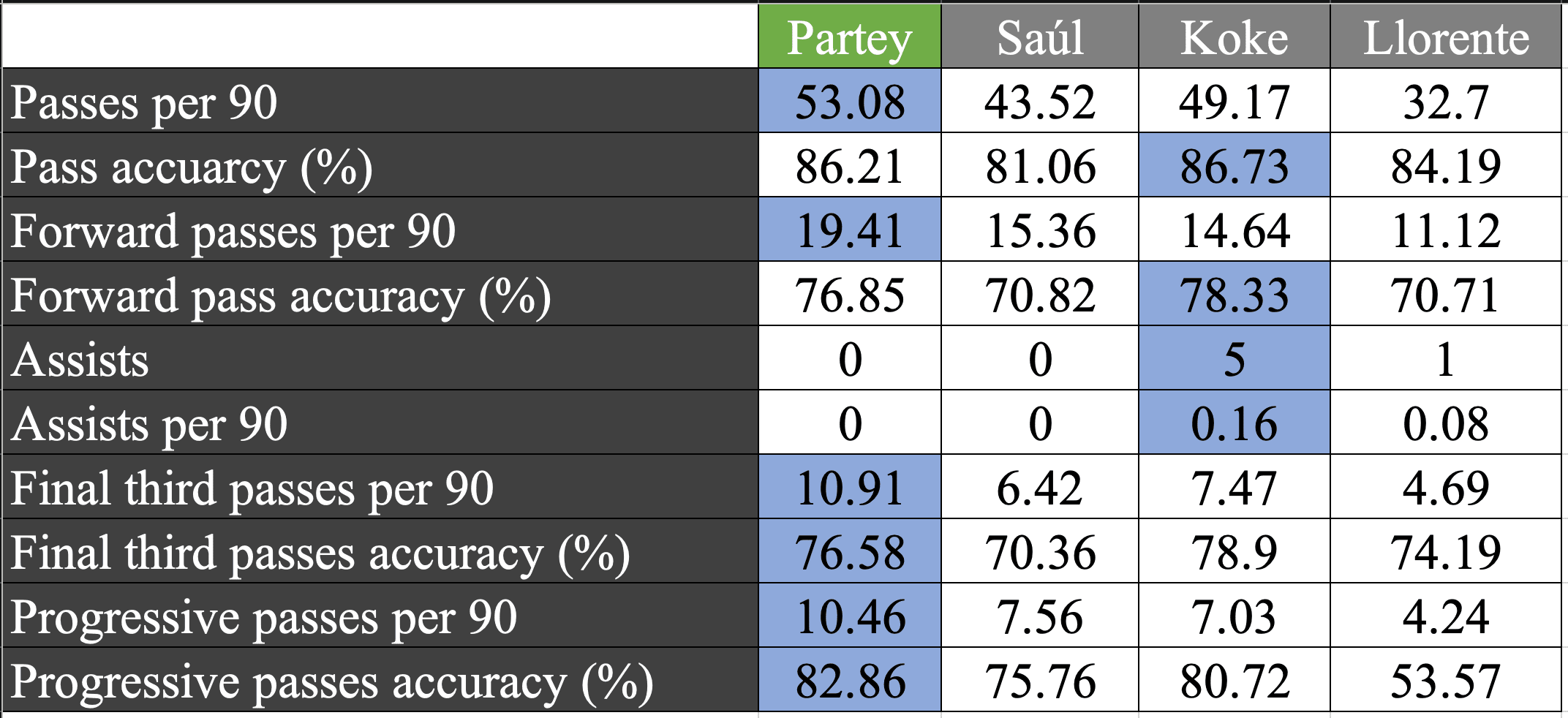
Thomas Partey Eye Test
The eye test just further proves the statistical data.
Numerous times in matches Thomas will actually stop and look around and adjust himself accordingly.
Not only does he cover the pitch so well, but he does also it smart, always ensuring that there is some benefit to where he is on the pitch.
From there, he will often receive the ball, because he is in such a good position.
Once he has the ball, he has a good view of what is going on, and he is able to make a decision.
He can either progress the ball forward with a pass, or he can act as a ball carrier, and physically move it himself.
No matter what he decides, Thomas does get to decide the play that Atlético decide to make.
He is more often than not the shot-caller, and despite being a defensive-minded midfielder, he is so crucial to the attack.


Thomas’ action map is so widely spread out because he is always aware of where he is, and where he can be most useful to his teammates.
Although Atlético play in a compact 4-4-2 (more on that later), he does have the licence to roam, especially whilst his team is in possession because his passing ability is so distinguished and important to how his team plays.
Thomas Partey Duels & Ball Retention
As mentioned, Thomas is a defensive-minded midfielder, and this is truly apparent when looking at how he performs in duels.
He commits an average of 15 successful defensive actions per 90, winning 62.4% of his general defensive duels, 60.19% of his aerial duels, and 76.57% of his ground duels.
He also commits a total of 4.82 interceptions per 90, on average.
These are really good statistics, but they are not the only reason as to why Thomas stands out as a defensive midfielder.
When he commits to a duel, he makes it a priority to win the duel but to also keep the ball.
Often times, statistics can be a bit skewed, because once the duel is won, some players mismanage the ball, and it ends right back with the opposition.
Thomas’ ball retention after duels is something to note, as it is very difficult to get the ball off him once he wins the duel.
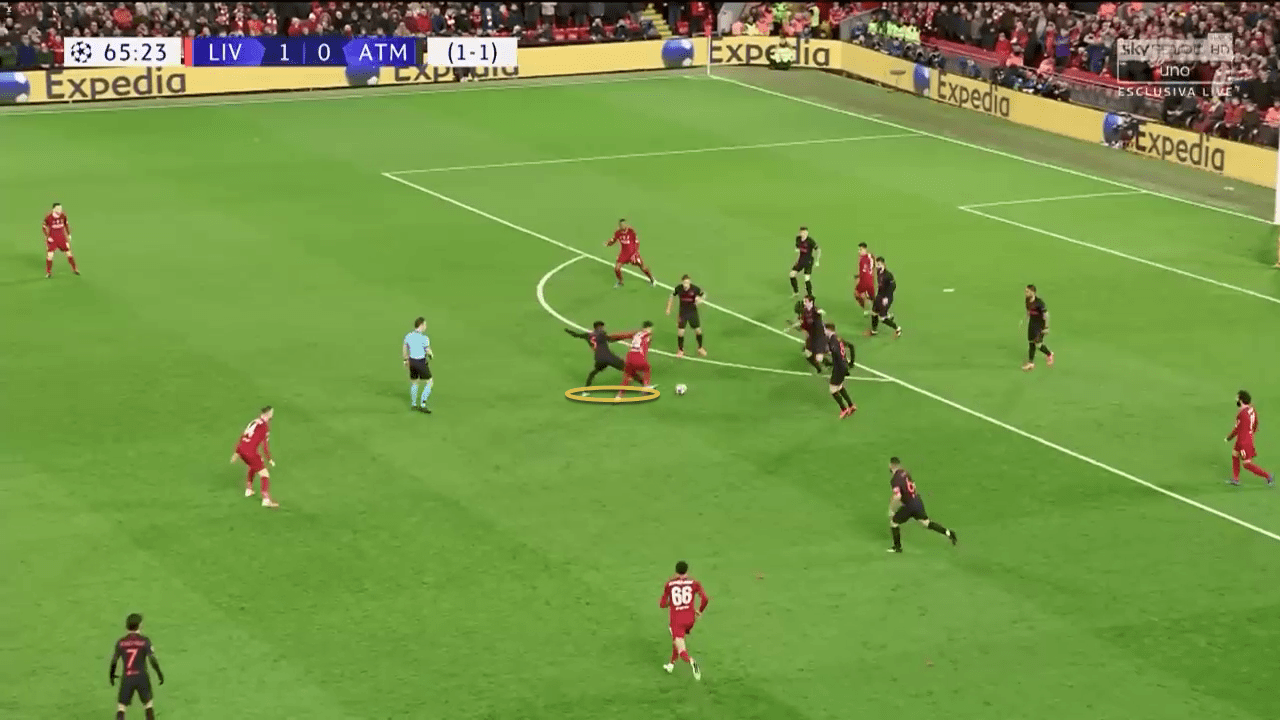
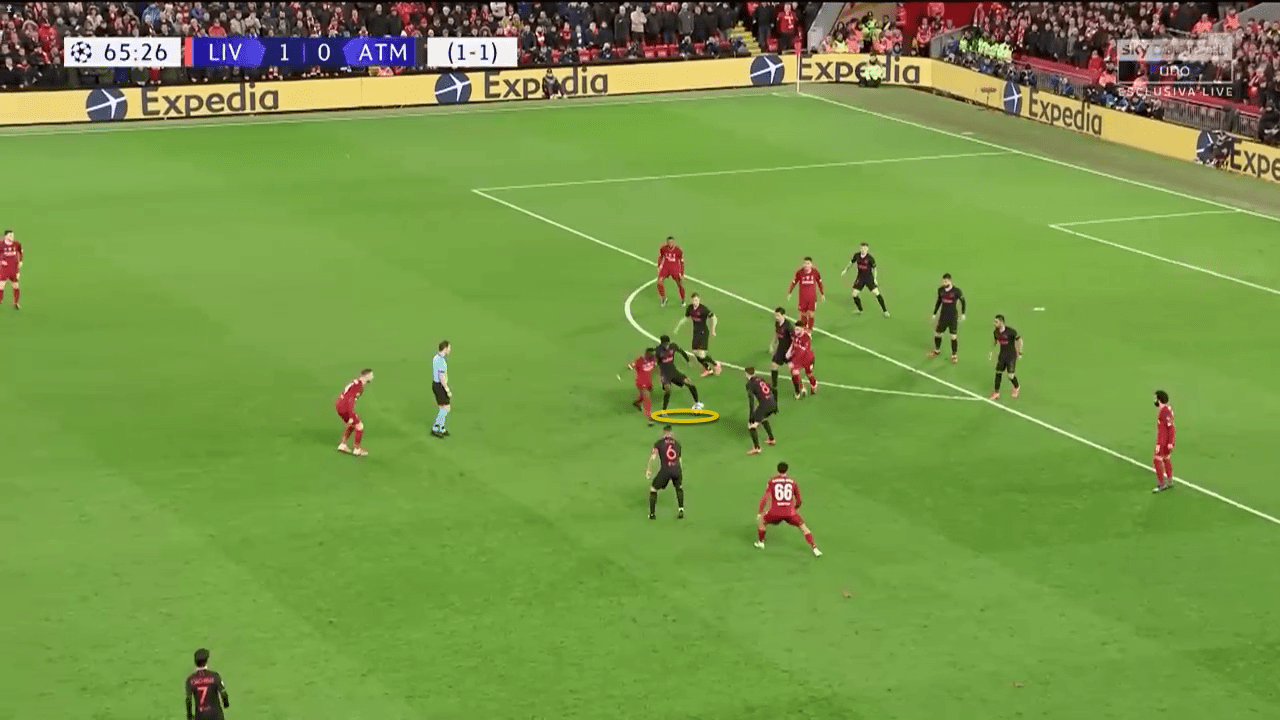

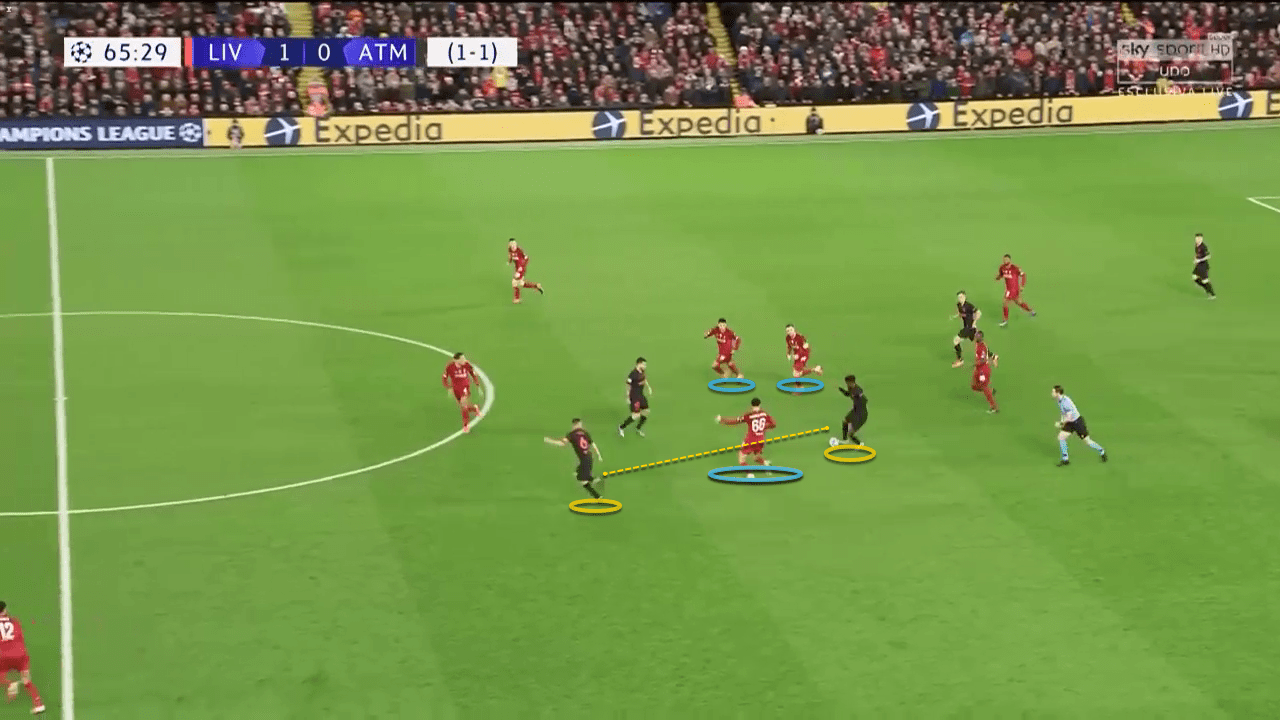
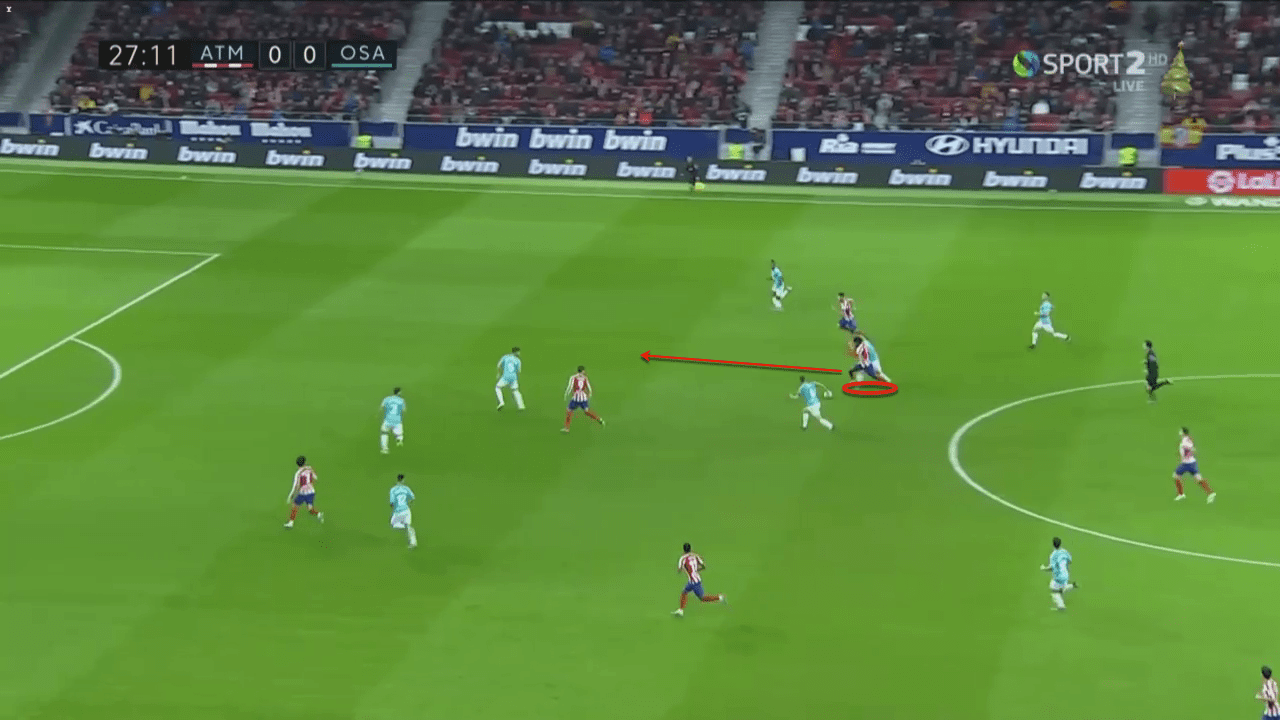

Thomas Partey Error Proneness
We’ve discussed some of the many strengths that Thoams has as a player.
A predominant weakness though is that his game sometimes does suffer from avoidable errors.
This is not because of a lack of a certain quality that he does not have, but simply because he will make too quick of a decision.
The way Atlético play also has a factor in this, because their counter-attack style is based on quick play to get the ball forward (again, more on that soon).
Thomas, as do the rest of the Atleti players, finds himself playing these quick passes because of Simeone’s instruction to get up the field quickly before the other team can settle into a defensive shape.
Usually, these errors don’t result in goals for the opposition, simply because Atlético are either already too far up the field or they are still compact from their shape.
However, if Thomas played for a more expansive team, say Arsenal, these errors may matter more.
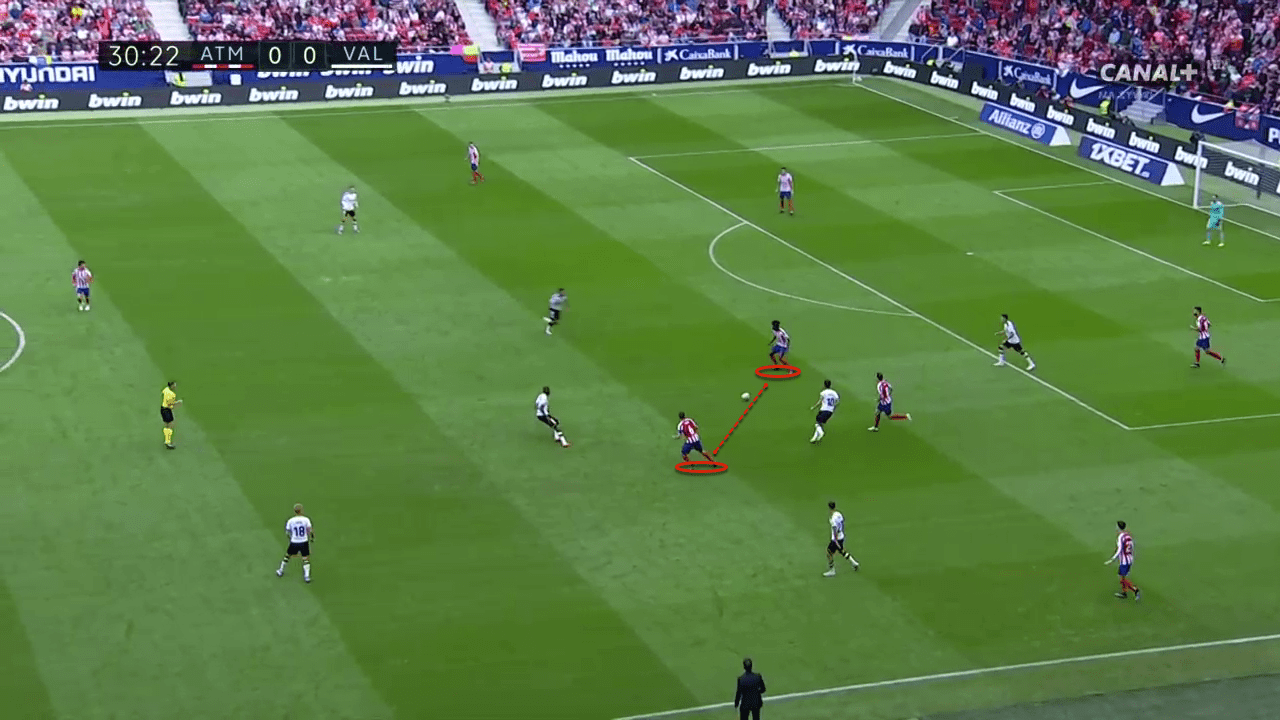

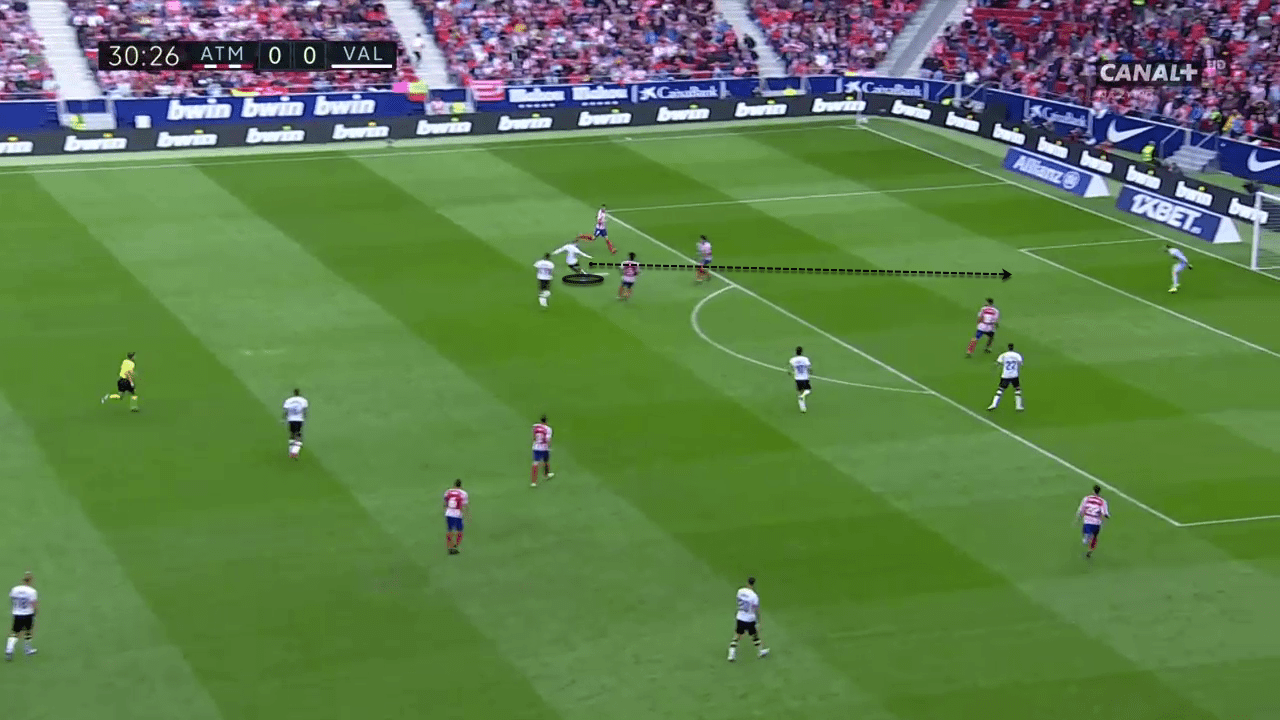
Differences between Simeone & Arteta’s Playstyle
Any player moving from one club to another will have some sort of adjustment period.
It is likely that if Thomas does make the move to Arsenal, he will be in for a long adjustment period.
Not only is he moving to a new league, but Simeone and Arteta’s style of play differ completely from one another in a lot of ways; the role Thomas plays at Atlético would be very different should he move to London.
Diego Simeone Style Of Play
In Simeone’s system, Thomas plays as part of a midfield bank of four as Atlético Madrid play a very rigid 4-4-2 system.
In 80% of their matches this season, Simeone has deployed this system, and although he sometimes will set his team up in something different (usually, it will be a mid-game tactical change) he has mainly stuck true to the tried and tested 4-4-2.
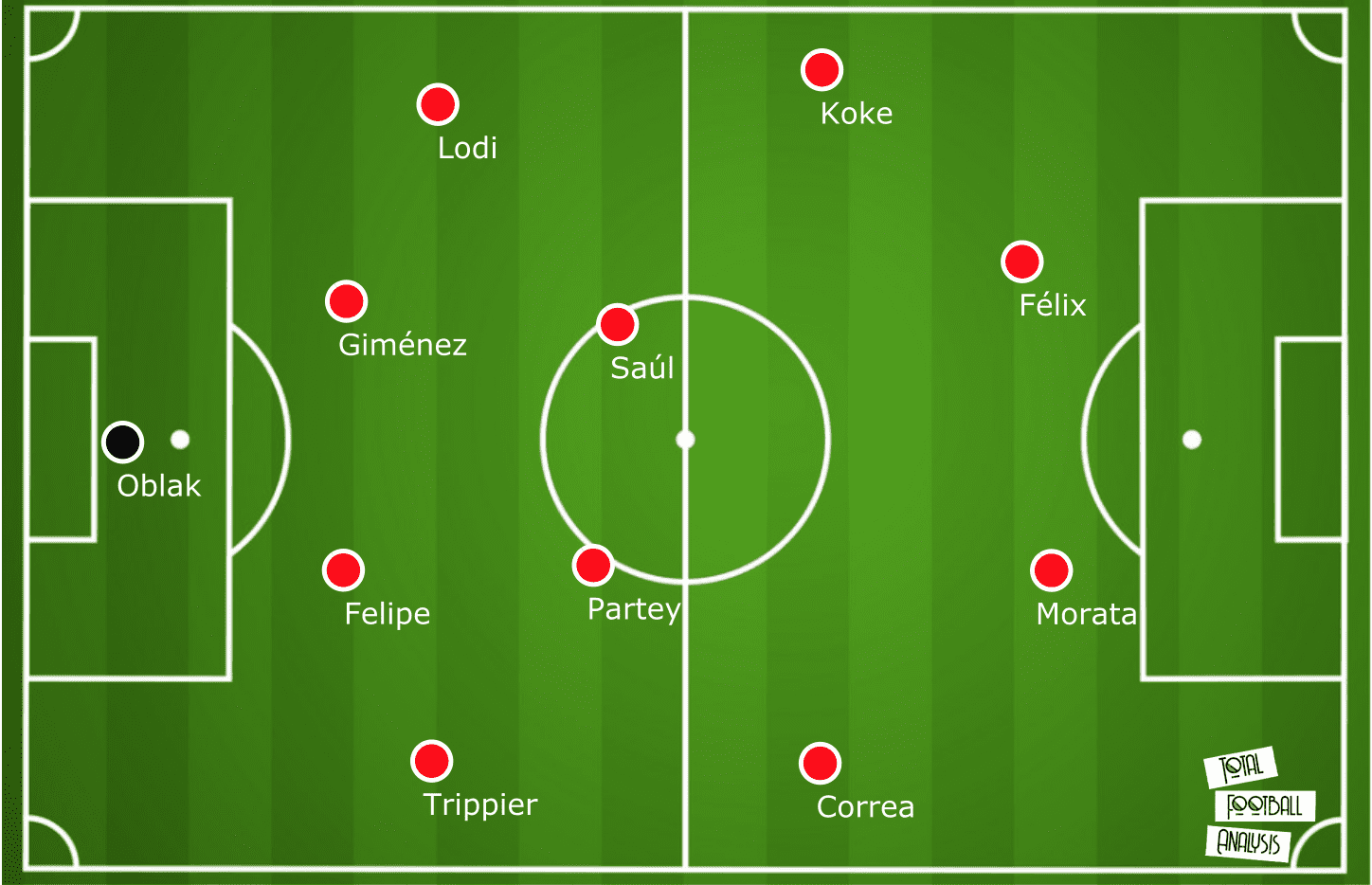
In this 4-4-2, Atlético are perfectly content on letting the opposition have the ball, especially in their own half.
Their average for possession this season is 45.61%, and while that may not seem that low, but it is, given that Atlético are one of the top teams in La Liga.
Looking at their possession statistics against other ‘bigger’ clubs showcases how willing they are to give up possession.
In both legs against Liverpool in the Champions League (28.15% and 29.35%), in the two La Liga matches against Real Madrid (37.71% and 43.95%), and in both the Super Cup match and La Liga match against Barcelona (28.97% and 32.43%), Atleti had significantly less possession than their opponents.
While their opponents have possession, the players shift from side to side, depending on the location of the ball carrier.
While out of possession, they will shift from a 4-4-2 to a 4-5-1, with one of the strikers dropping a bit deeper – very rarely will the team press out of possession.
On the rare occasion that a press occurs, it is usually one player pressing the opposition ball carrier, with the other Atleti players focusing on their positioning, rather than pressing as a team to win the ball back.

A press with two or more players only happens once the opposition’s ball carrier is in a very dangerous position (in and around the box).
This is when Atlético will essentially corner the opposition player, and they are usually successful in winning the ball back as the opposing player is often under too much pressure to find an outlet or switch the play to the other side of the pitch.
This leads us to the attack.
Atlético’s main plan when they win possession back is to counter-attack through quick interplay.
The midfield four are crucial in this as it is their job to either quickly create chances through skill or be quick and physically move up on the pitch to support the attack (or a combination of both).
Mikel Arteta Style Of Play
When Arteta joined Arsenal in December, he had the weight of the world on his shoulders.
After a bitter end to an amazing era under Arsene Wenger, Unai Emery was supposed to come in, steady the ship, and start a rebuild.
However, he was sacked after a seven-game winless streak in all competitions.
Fans were in desperate need for a change, and Arteta was able to deliver.
Some of Arteta’s philosophies have been taken from Manchester City manager, Pep Guardiola, as Arteta was his assistant manager for three years, but he also has established his own style of play in the 15 games he has managed.
Regardless, the way Arsenal currently play differs from Simeone’s Atlético quite a bit.
Arteta has favoured 4-2-3-1 formation, the same formation that Emery used.
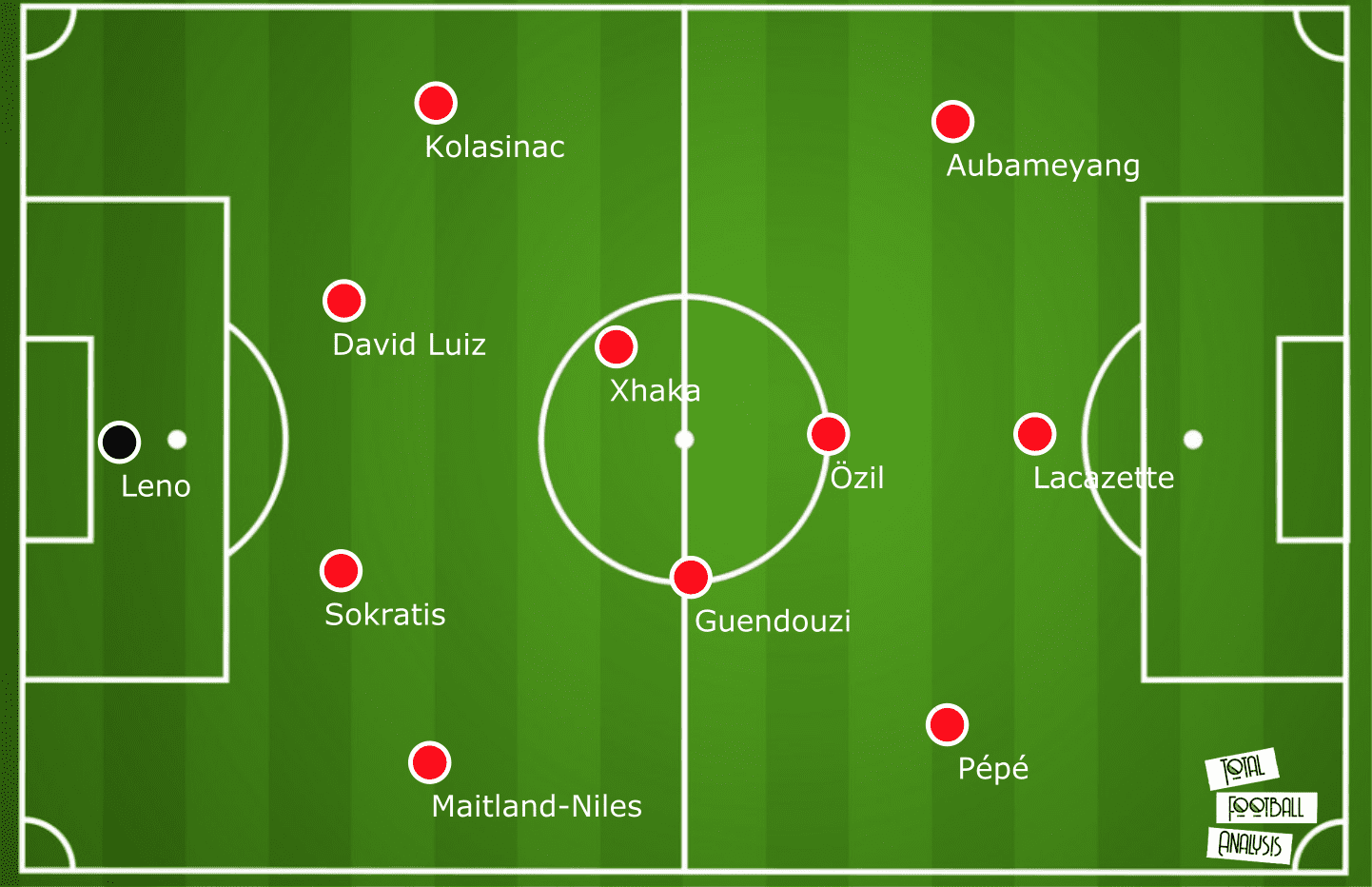
However, under Emery, Arsenal were using a 4-2-3-1 out of possession as well, whilst in defence.
It was not working because there were too many gaps in between players and the opposition found it easy to isolate individual players, constantly putting Arsenal in 1vs1 situations whilst defending.
Arteta has switched to a 4-4-2.
The good news for Thomas is that whilst Arsenal are defending, the play in a very similar way to Atlético, which is not focusing on a press, but instead covering space.
However, the press is a bit different.
For one, it usually happens eariler, around the halfway line, rather than the box.
Second, it’s much more systematic in that utilizes several players, usually two pressing the ball carrier, and the rest denying passing lanes.
The idea of trapping the opponent is similar to Atleti’s but the execution is different – more intense, and more proactive.
The attack is really what changes.
Arsenal will convert back to the 4-2-3-1, and try and get as many attackers in the box.
In this case, one of the two central midfielders will actually drop back, becoming part of a makeshift backline, while the fullbacks move up the pitch, which allows for Arsenal to have as many as six players in the opposition’s final third (the two fullbacks, the player in the #10 role, the two wingers, and the striker).
The central midfielder who does not drop into the backline is tasked with supporting the attack.
Instead of quick, fast passes forward like Atlético, Arsenal are more patient.
Slowly attempting to stretch the opposition’s line of defence until there are gaps to exploit.
If Thomas were to move to Arsenal it would take him time to adjust, simply because of the change in formation, tempo, and style of play.
He has been playing under Simeone now for a little under five years.
It will take a while for him to adjust to the drastic difference between the midfield role of the two teams.
Comparison to Arsenal’s Current Midfielders
If Thomas were to come in, he likely is a starter (after the adjustment period).
The question then becomes who does he replace to make Arsenal’s current XI stronger.
Arsenal’s current list of senior defensive and central midfielders include Lucas Torreira, Granit Xhaka, Mattéo Guendouzi, and Dani Cabellos (who is on loan from Real Madrid until June 2020).
Joe Willock is also an option, as the 20-year-old joined the senior team from Arsenal’s U23 squad in the summer of 2019.
Assuming that it’ll take time for Willock to consistently start Premier League and European matches and that Cabellos leaves Arsenal this summer (either to go back to Real Madrid, or another loan move), it makes sense to stick to comparing Thomas to Lucas Torreira, Granit Xhaka, and Mattéo Guendouzi.
This statistical overview shows some of the strengths and weaknesses that Thomas has, as well as some additional statistical data.
As mentioned despite his assist numbers being low (here shown by his low xA: 0.06), he excels at passes into the final third.
He also has a game average of 440 yards in progressive distance, a statistic which measures the distance that the player was able to carry the ball towards the opposing team’s goal with passes and carries.
These statistics, as well as the others that are shown in the picture, will help us compare Thomas to the three Arsenal players.
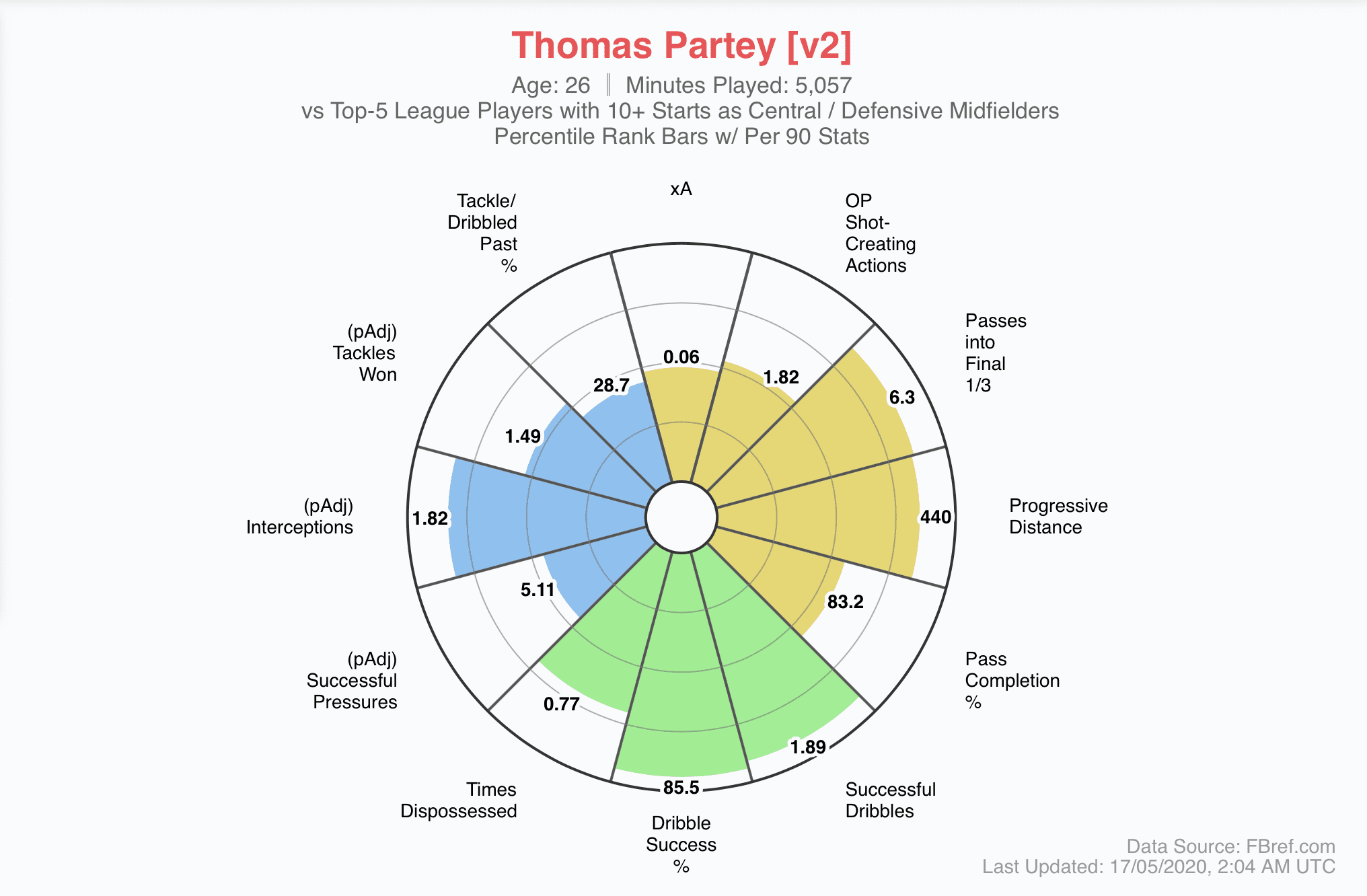
Lucas Torreira
Based on some speculation (though it does not come from the most reliable sources), Torreira is the most likely out of the three Arsenal midfielders to leave this summer.
We will look at how he compares to Thomas if the Ghananian were to come in and replace him, and how they would complement one another if they would play together, in case Torreira does decide to stay in London.
Compared to his two Arsenal teammates, Torreira is the best defender out of the three.
His number one strength is winning ground duels.
Torreira is on the smaller side, and while that may seem like a disadvantage, it allows him to be much more mobile, and he can usually get the better of players this way.
With high numbers in tackles won (2.15), interceptions (2.24), and successful pressures (7.4), Torreira has shown he is most comfortable as the last midfielder before the defensive line.
When Arsenal is in possession, Torreira is comfortable with the ball at his feet – again his smaller build allows him to navigate tight spaces.
However, he is not comfortable, nor is it really his job, to create goal-scoring chances.
If Torreira were to leave this summer, Thomas should be able to slot into his role as the most defensive midfielder, even though Torreira’s defensive numbers are slightly better.
Thomas would also be able to bring something more to the table with his attacking threat, though again, the high risk, high reward factor comes into play again here, and Thomas would likely commit more errors than Torreira.
Playing as a pair, Torreira and Thomas would work well together simply because they have opposite strengths.
Torreira as the #6 with Thomas slightly ahead of him would give Arsenal a very balanced and well rounded midfield pivot.
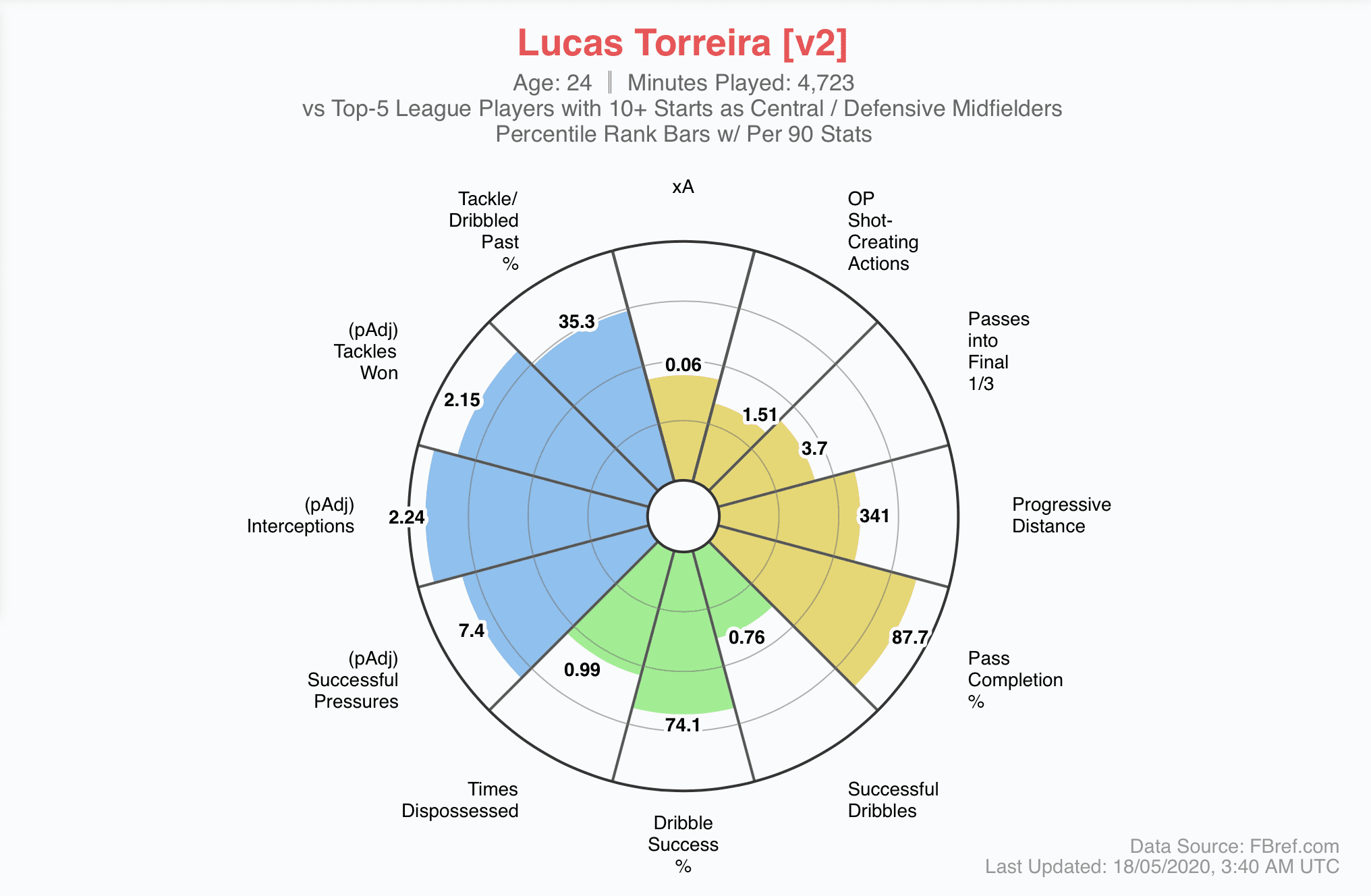
Granit Xhaka
Out of the three, Xhaka has the most experience and has been at the club the longest.
His strengths differ from Thomas’, as he is much more comfortable on the playmaking aspect and, relying on long balls to get the ball forward.
While both do have an error in them, Xhaka is much more reckless, and this does impede his game sometimes.
It is important to note that Xhaka was very much a polarizing player for Arsenal while Emery was in charge at the club, because of poor performances and reaction to fan criticism, leading him to be stripped of the club captaincy.
Since Arteta has come in though, he has performed at a higher standard.
A statistical overview of Xhaka shows that he is more proactive that Thomas going forward.
He has a higher average xA (0.11), higher average passes into final third (7.7), and a higher average progressive distance (526).
This comes at the cost of worse defensive stats, with the tackled/dribbled past statistic of a 41.6% average per game standing out the most.
It is worthy to note that these statistics do include Xhaka’s very poor run of form under Emery.
Should the promise he’s shown under Arteta continue, these statistics will go up.
That being said, Thomas is definitely a more complete defensive-minded player.
If Arsenal were to play a midfield two, Thomas would have to resist the urge to progress forward; that role would likely be given to Xhaka, while Thomas would be the one who would slot in to the makeshift backline when Arsenal have possession.
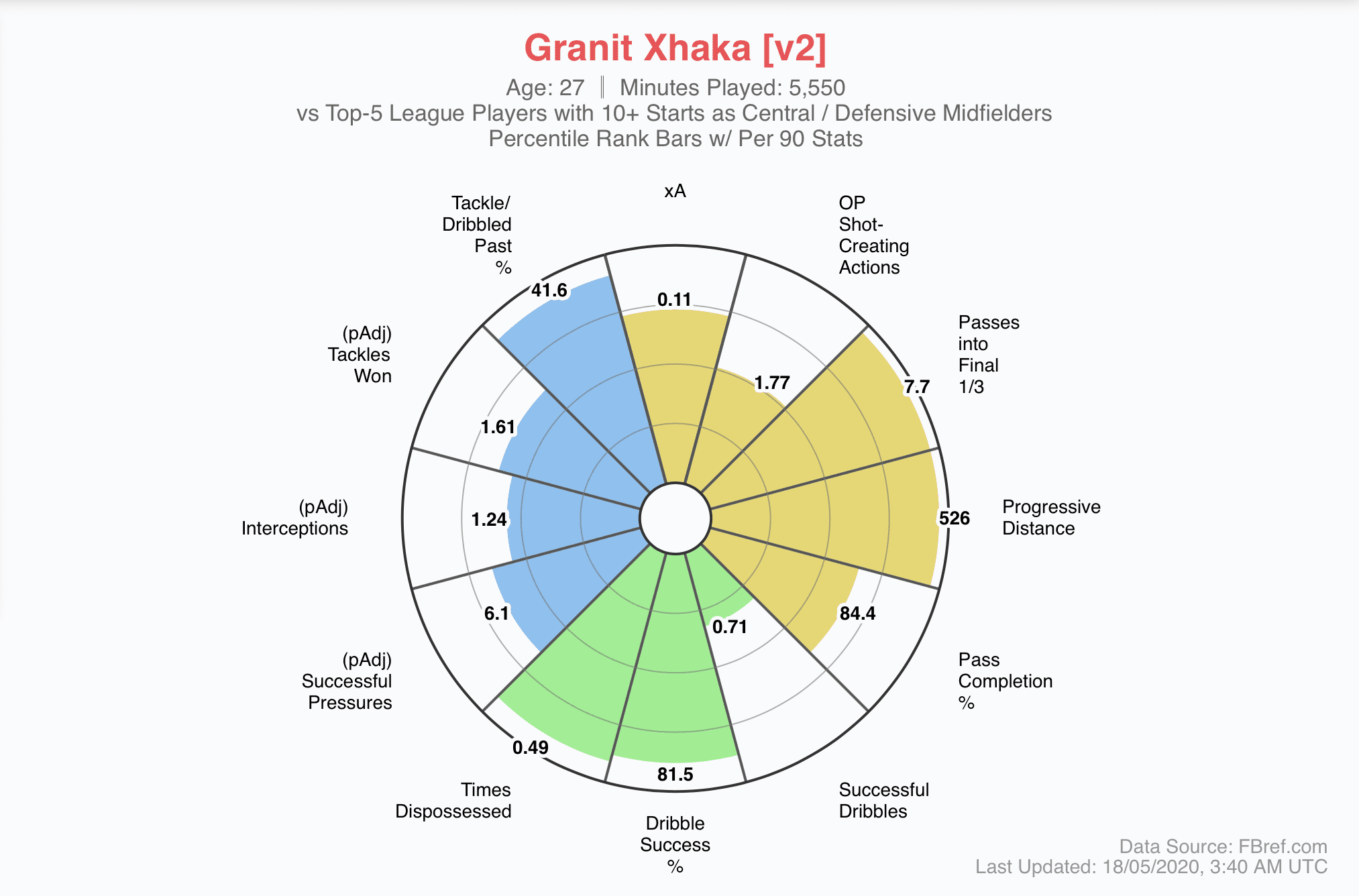
Mattéo Guendouzi
The youngest of the three, Guendouzi’s rise the past few years has been fantastic to watch.
Going from playing for a Ligue 2 side, Lorient, looking to gain promotion back into Ligue 1 in the 2017/18 season to a year later moving to Arsenal surely was not easy but he has transitioned well, and he has a bright future both at Arsenal, should he stay, and for France, despite his national team being quite stacked in midfield.
The biggest transformation that has happened to Guendouzi since his time with Lorient is his versatility.
When he first joined Arsenal, he predominantly played as a #8, supporting the forward players, and those qualities remained while with the Gunners.
We can see that out of the four players, his attacking output is the best.
Highest passes into the final third (7.09), highest progressive distance (539), and highest open play shot-creating actions (2.07), which is simply one of the last two offensive actions before a shot (ex.
a dribble, a pass, or being fouled).
The versatility idea comes in because at Arsenal, he has greatly improved his defensive skill as well.
Before moving to London, Guendouzi did not have the capabilities to play in the #6 role.
Now, with a high number of interceptions (1.77), successful pressures (7.67), and a low percentage of being tackled/dribbles past (25.4), Arsenal do have a young player who has not only shown strong defensive improvements (something they needed desperately post-Wenger era) but in general, a young player willing to work hard and improve aspects of his game.
Which leads me to a weakness: dealing with defensive players who have quick feet.
Guendouzi struggles whilst in possession, and he is being pressured.
He would much rather progress the ball forward by passing it to a teammate, rather than taking on an opposition player himself.
Out of the four players, he has the highest dispossessed average per match (1.38), and lowest dribble success rate (70.2%).
A midfield pair of Thomas and Guendouzi would work best if the opposition is laxer in their pressing whist out of possession – a team that sits deep and defends.
Both players are comfortable with their passing abilities, and due to Guendouzi’s improvement in defensive work, they’d be able to minimize the danger of a target man attacker, the type that these teams usually have.
However, if this pair were to come across a team that is more aggressive, they would be able to target Guendouzi while he has the ball and have a higher chance of winning back possession.
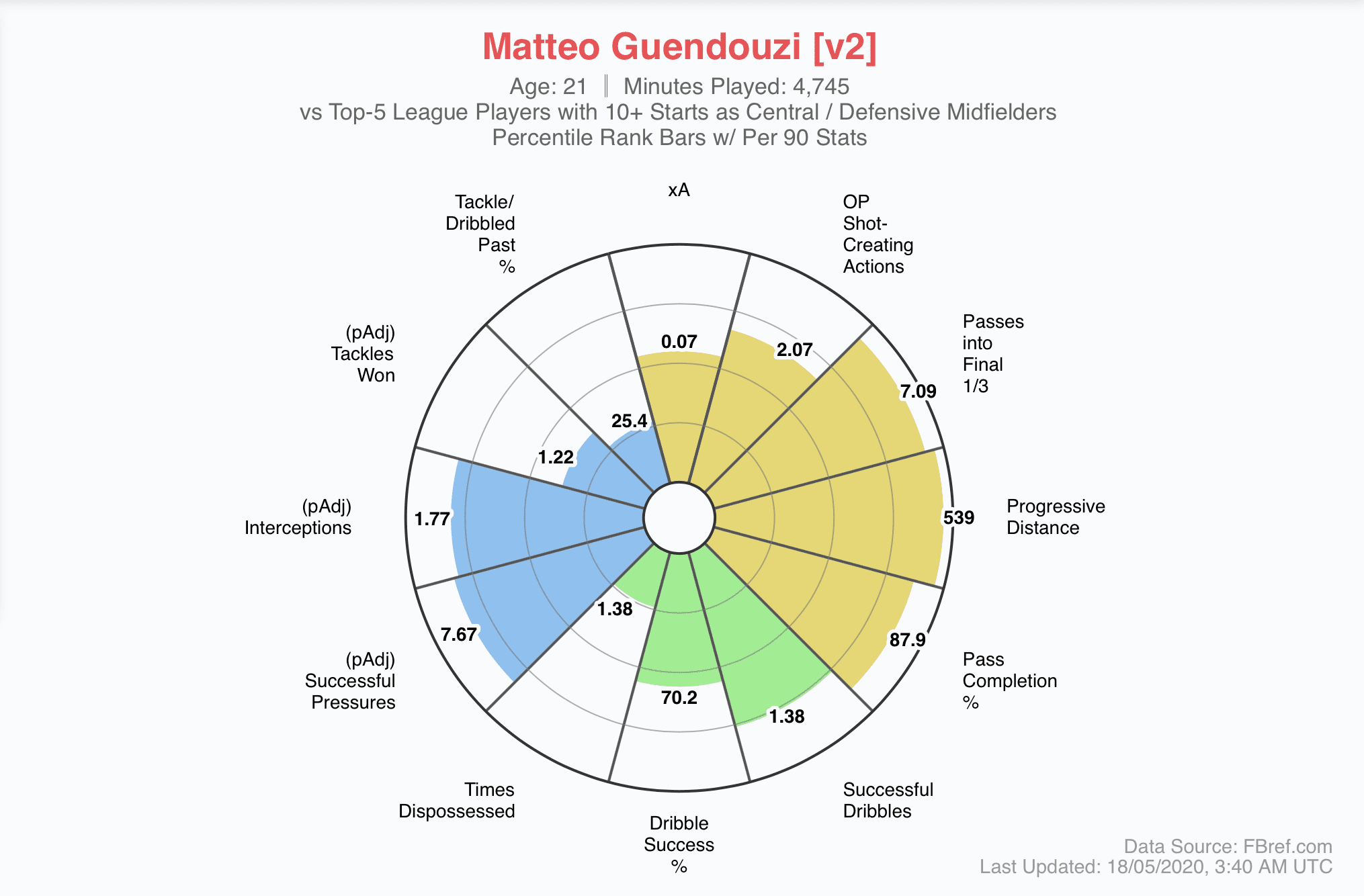
Final Thoughts
This scout report has shown that Thomas would be a fantastic addition to this current Arsenal side.
Through analysis, we can recognize his many strengths that would be beneficial to this team.
It may take him some time to adjust, but when comparing Thomas to Arsenal’s current midfielders, it is clear that he has a lot to offer, regardless of who he plays with.






Comments